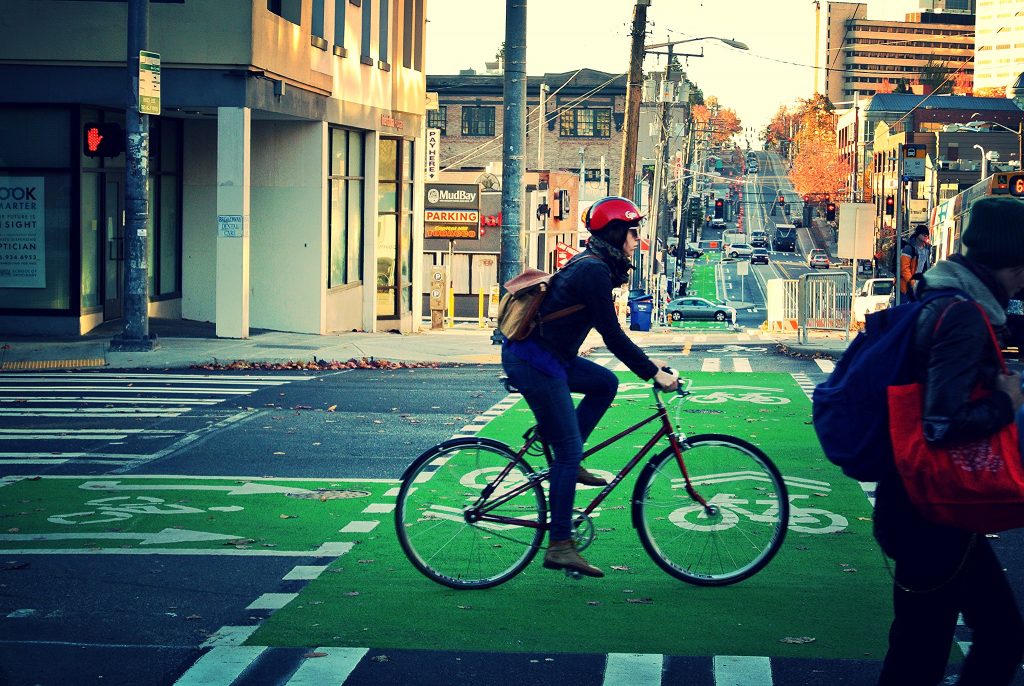10 questions every presidential candidate should answer about transportation and climate change
The debate has passed, but the relevance of these questions have not. We’ll continue to urge candidates to answer these questions.
On September 4, 10 Democratic presidential candidates will participate in a town hall focused solely on climate change. We have a list of questions related to transportation that we want every candidate to answer.
Climate change is undoubtedly a defining issue of our times, and the transportation sector is the single largest source of greenhouse gas emissions in the United States. But there’s little understanding about where transportation emissions come from or how to reduce them. Many think we just need to replace all gas powered vehicles with electric vehicles (EVs). But we cannot address this crisis without an understanding of the crucial role that the design of our communities and roadways play in producing our transportation emissions.
While many other sectors have reduced emissions, transportation is headed in the wrong direction. Driving represents 83 percent of all transportation emissions and these emissions are rising—despite cleaner fuels, more efficient and electric vehicles—because people forced by our development patterns and transportation system to drive more and make longer trips.
It’s time to have a more robust conversation about the connections between transportation and climate change. The future depends on it. Here are the questions every candidate should be asked:
1) How does your plan to respond to climate change allow people to make fewer and shorter car trips?
Transportation is the largest source of greenhouse gas emissions in the United States, and those emissions are rising. Studies show that we cannot reduce emissions by relying on expected growth in clean vehicles and fuel, that we must also reduce expected growth in driving.
2) What are the ways in which we can change development patterns to place jobs and other essential services closer to the people who need them?
Our reliance on cars and driving to our destinations often goes back to development decisions that place people’s needs—banks, groceries, schools, jobs—far away from where they live.
3) As President, what will you do to ensure the United States measures greenhouse gas emissions in transportation?
You can’t manage what you don’t measure. Soon after taking office, the Trump Administration scrapped a U.S. Department of Transportation plan to measure greenhouse gas emissions in transportation. If we aren’t taking the basic step of measuring these emissions, how can we take steps to reduce them?
4) How should Congress rethink how federal highway dollars are spent?
Federal surface transportation policy prioritizes highways over all other forms of transportation. Federal highway formula dollars are guaranteed and allow states to spend over $40 billion per year on highways and highway expansion. Highways often result in a more spread out development pattern, which generates both more traffic and more emissions. There is no limit on federal funds used for highway expansion and no requirement that states use that money to maintain the system we already have. As a result, our emissions keep going up and our potholes get larger.
5) How does your plan orient more investment toward transit?
The federal government makes it easy for states to build and expand highways, providing up to 80 percent of funding for highway projects. In contrast, the federal government will only pay no more than half of the cost of public transit projects, which places a greater burden on communities to build transit compared to highways. The federal government spends five times the amount on highways than on transit.
6) How would you shift the program to promote and reward efficiency and reduced emissions?
Under the current formula structure of the federal program, states are rewarded for inefficiency. The more gas is burned—the more people drive and the more they emit—the more funding the state gets. Is this the message you support?
7) What should change in the federal transportation program to support walkable communities which are better for the economy and the environment?
Core, walkable areas are responsible for the highest density of economic activity in most regions. Yet the federal program is much more focused on supporting high speed vehicle traffic, even in these walkable areas, which makes walking deadly.
8) How does your infrastructure plan address this pedestrian safety epidemic and make it possible for people to take more trips by walking and biking?
Almost half of all car trips are under three miles. But our roadways are designed for vehicle speed over pedestrian safety, making it unsafe in many situations for people to walk instead of drive. In the past decade, the number of people struck and killed while walking increased by 35 percent, reaching overall level of fatalities not seen in nearly 30 years.
9) How would you support communities that are shifting their transportation systems to integrate more transit?
Small and mid-sized cities across the country are recognizing that providing transit options is essential to boosting their economic activity and reducing their emissions.
10) As President, what would you do to strengthen and support Amtrak’s existing long distance and inter-city network?
Many presidential platforms, including the Green New Deal, proclaim the need to invest in and build a national high speed rail network as a way to connect communities and reduce emissions.





















11 Comments